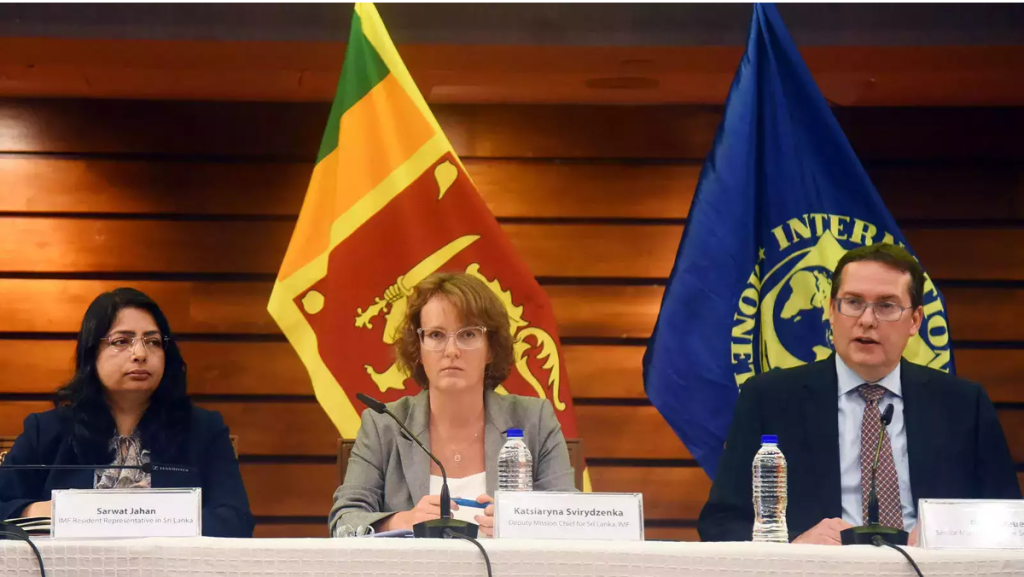When developing countries get into a debt crisis, India has historically been affected too. This was true in 1991 when India went bust. It was true during the Asian financial crisis. It was true during the great recession of 2008-09.
But currently India is completely solvent. It is evolving from a debtor to a creditor nation. So, there is scarcely any public awareness in India of the debt crisis in 70 other developing countries. The crisis offers India a chance to turn the screw on China, which is partly responsible for the debt problem through cavalier lending via its Belt and Road Initiative (BRI).
The most urgent case in point is Sri Lanka, which defaulted on its foreign debt of $46bn last year. The IMF agreed in principle to a bailout package of $2.9bn in phases. The next instalment of $330mn was expected to be released this week when an IMF mission visited the country. But the mission ended without a dollar being released. One reason was Sri Lanka’s low tax collection. But an equally important reason was China’s refusal to forgive part of Sri Lanka’s debt, something other creditors (including India) were willing to do.
The IMF has a Financing Assurances Review to ensure that its rescue loans will be repaid. This process requires existing creditors to take a haircut — forgive part of their loans — to ensure that Sri Lanka will have enough foreign exchange to repay the IMF. For decades, all creditors — including the Paris Club of western private financiers — have agreed to this standard IMF procedure. But this time China steadfastly refused to take a haircut. And so, the IMF loan remains in limbo.
China has long said that it did not create the debt restructuring rules that have been in force for decades, and so contests them. This is part of its muscle-flexing to show that it is the new superpower on the block. But there are consequences. If China does not agree to debt relief, the IMF may not be able to help countries urgently needing a rescue. The problem will worsen, and China will get the blame.
India should insist, as one of the lenders, that IMF rescues for Sri Lanka and other debtors should not go through unless China agrees to a haircut.
In another case, that of Zambia, China did agree after long haggling to a form of debt relief. But in that case, it was allowed to relabel some public debt as private debt. It also insisted that if Zambia recovered quickly, it should be able to claw back its forgiven debt. If every country argued in this fashion, the IMF would never get repaid. Zambia is unlikely to recover smartly, so this issue may be theoretical. But China’s attitude is a serious threat to debt relief for up to 70 countries, mostly African, many of whom owe money to China for BRI projects.
Besides, the debt relief given to Zambia was part of a special G20 package for low-income countries. But Sri Lanka is a middle-income country. So are Pakistan, Bangladesh, Egypt, and Morocco. They are not eligible for lenient treatment, so the IMF and other creditors will have to take a tougher line.
What should India do in such circumstances? Historically, India was in favour of the most generous IMF loans for debtors. But now it should insist, as one of the lenders, that IMF rescues for Sri Lanka and other debtors should not go through unless China agrees to a haircut. India will be backed in this case by the Paris Club.
This will send the message to all developing countries that while borrowing for BRI projects without conditions from China may sound very attractive, there will be a reckoning in which China will act like a hard-hearted usurer. That will expose the pitfalls of BRI like nothing else.
In Sri Lanka’s case, India was a co-chair of the creditor’s committee. Some financiers speculate that this was why China refused a similar position. But if there is any truth in that, it has an obvious lesson. India should consider giving small loans to countries in substantial debt to China. That will entitle India to a seat at the negotiating table. In that capacity it should insist on China taking a haircut in all cases.
If China tries to back out — as it is doing right now — let it take the rap for holding up rescues of needy countries. Let it be exposed as the stingy Shylock.
BRI already has a tarnished image. Earlier, China was spending tens of billions of dollars per year on BRI projects. This has shrunk to barely one billion dollars this year. Borrowers are chary of borrowing and China is chary of lending. India can turn around and tell the borrowers, “I told you so.”


